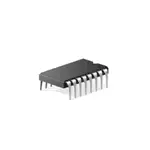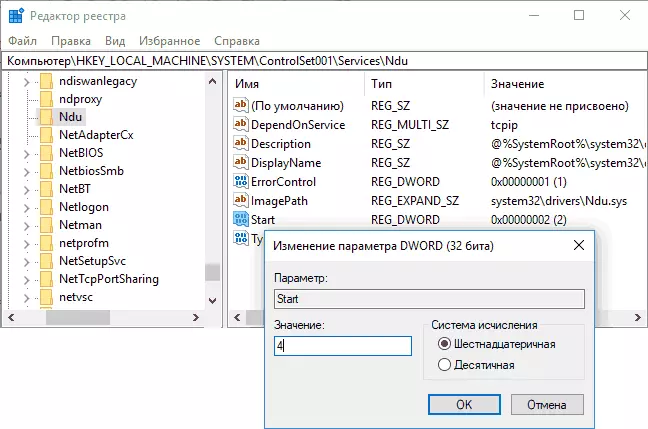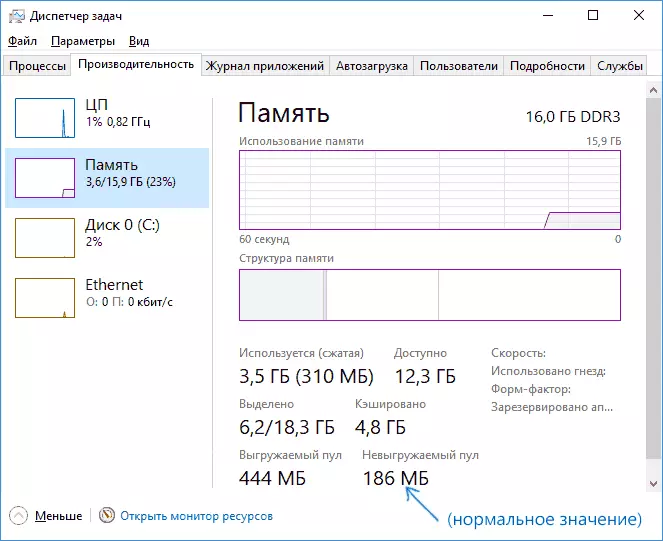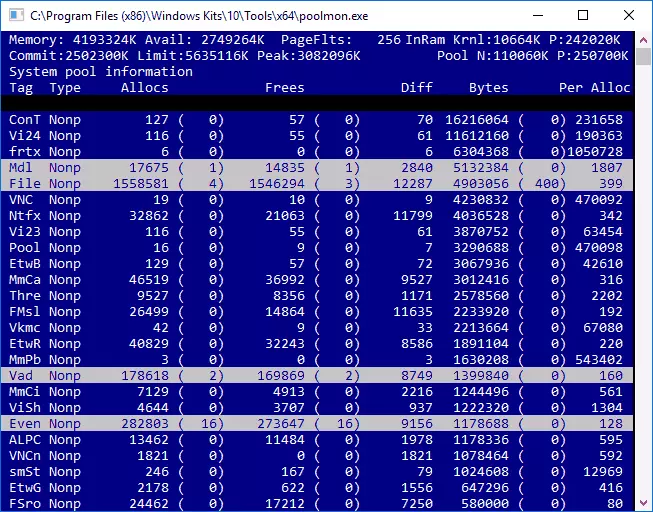
The problem in most cases is caused by incorrect operation of network drivers in combination with Windows 10 network monitor drivers (Network Data Usage, NDU) and is simply solved, which will be discussed in this instruction. In some cases, the cause of memory leaks can be other equipment drivers. Close on the topic Material: What is the memory cached in Windows 10 and how to clean the cached memory.
Correction of memory leakage and filling out a non-discharged pool when working in the network
The most common situation is when the unsembly RAM 10 pool is filled when working on the Internet. For example, it is easy to notice how it grows when downloading a large file and after that it is not cleared.
If the described is your case, it is possible to correct the situation and clear the unbearable memory pool as follows.
- Go to the registry editor (press Win + R keys on the keyboard, enter the REGEDIT and press ENTER).
- Go to the sectionHKey_Local_machine \ System \ ControlSet001 \ Services \ NDU \
- Double-click the parameter named "Start" on the right side of the registry editor and set the value 4 for it, to disable the network usage monitor.

- Close the registry editor.
Upon completion, restart the computer and check whether the problem has been fixed. As a rule, if the case is indeed in the network card drivers, the pool is no longer growing more than its usual values.
If the steps described above did not help, try the following:
- If the network card and / or wireless adapter driver has been installed from the manufacturer's official website, try to delete it and give Windows 10 to install standard drivers.
- If the driver has been automatically installed or has been pre-installed by the manufacturer (and the system has not changed after that), try download and install the latest version of the driver from the official site of the laptop or motherboard manufacturer (if it is PC).
The filled non-vigorous RAM pool in Windows 10 is not always caused by the drivers of the network card (although most often) and if the actions with the network adapters and NDU drivers do not bring results, you can resort to the following steps:
- Installing all original drivers from the manufacturer on your equipment (especially if at the moment you have drivers installed automatically installed Windows 10).
- Use the Poolmon utility from Microsoft WDK to determine the driver causing a memory leakage.
How to find out which driver causes memory leakage in Windows 10 using Poolmon

To find out the specific drivers that lead to the fact that the unhappy memory pool is growing with the Poolmoon tool, which is part of Windows Driver Kit (WDK), download which can be from the Official Microsoft website.
- Download WDK for your version of Windows 10 (Do not use the steps on the proposed page related to installing Windows SDK or Visual Studio, just find the "Install WDK for Windows 10" item on the page and run the installation) from https://developer.microsoft. COM / RU-RU / Windows / Hardware / Windows-Driver-Kit.
- After installation, go to the WDK folder and run the poolmon.exe utility (the default utilities are located in C: \ Program Files (x86) \ Windows Kits \ 10 \ Tools \).
- Press the Latin key P (so that the second column contains only the values of the Nonp), then - B (this will only be written in the list that use the unsecked pool and sort them into the number of space occupied in memory, i.e. by the BYTES column).

- Pay attention to the TAG column value for having the highest recording byte.
- Open the command line and enter the FindStr / M / L / L / S command value_tag c: \ Windows \ System32 \ Drivers \ *. SYS

- You will receive a list of drivers files that may cause the problem.
Further path - to find out by the names of the driver files (using Google, for example), to which equipment they relate and try to install, delete, or roll back depending on the situation.
